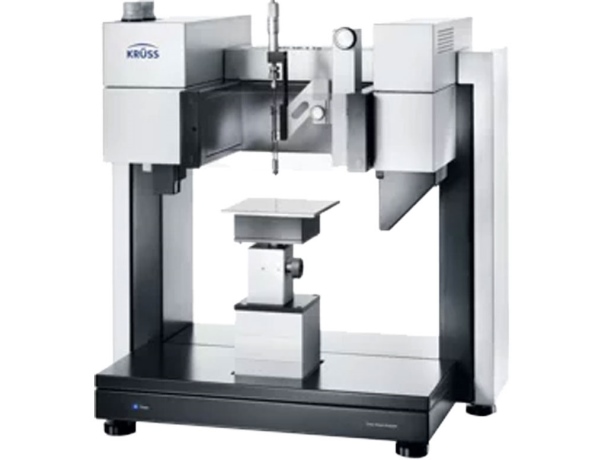Drop shape analysis is a crucial technique in surface science and material characterization. It involves studying the shape and behavior of liquid drops deposited on solid surfaces. Understanding the contact angle between the liquid, solid, and vapor phases provides valuable insights into surface properties.
At the heart of drop shape analysis are the concepts of surface tension and contact angle. Surface tension is the force that minimizes the surface area of a liquid, leading to spherical droplet shapes in the absence of external forces. The contact angle, formed between the tangent of the drop and the solid surface, indicates the wettability of the surface.
Applications of Drop Shape Analysis
Drop shape analysis finds applications in various industries, including surface coating, pharmaceuticals, and biomaterials. It is used to assess surface wettability, adhesion properties, and surface energy, aiding in product development and quality control processes.
How does Drop Shape Analyzer work?
General instructions only. Look at the manufacturer's instructions
- Preparation: First, you need to prepare the solid surface by ensuring it's clean and dry. Any contaminants or residues can affect the accuracy of the measurements.
- Placement: Place the sample with the solid surface facing upwards on the stage of the Drop Shape Analyzer.
- Droplet Formation: Using a syringe or a similar tool, carefully place a small droplet of the liquid whose contact angle you want to measure onto the surface of the sample. The droplet should be large enough to cover a significant portion of the surface but not too large to cause overflow.
- Image Capture: The DSA captures an image of the droplet on the solid surface. It usually uses high-resolution cameras and specialized lighting to capture clear images.
- Analysis: The software associated with the DSA analyzes the image to determine the contact angle. The contact angle is the angle formed between the tangent to the droplet's interface at the point of contact with the solid surface and the solid surface itself.
- Repeat: It's often useful to take multiple measurements at different points on the solid surface to ensure accuracy and account for any surface variations.
- Data Interpretation: Once the contact angle measurements are complete, you can analyze the data to understand the wetting behavior of the liquid on the solid surface. A low contact angle indicates good wetting, while a high contact angle indicates poor wetting or hydrophobic behavior.
- Cleaning: After completing the measurements, it's essential to clean the sample surface and any residual liquid to prepare it for further analysis or additional measurements.
Application of Drop Shape Analyzer
- Surface Characterization: DSA is extensively used in material science and surface chemistry to characterize surfaces. By measuring contact angles, scientists can determine surface energy, surface roughness, and wettability of materials.
- Quality Control in Manufacturing: In industries such as pharmaceuticals, cosmetics, and coatings, DSA helps ensure product quality and consistency by assessing surface properties and optimizing formulations.
- Adhesion Studies: DSA is employed to study the adhesion properties of coatings, adhesives, and films. Understanding how liquids interact with solid surfaces aids in developing adhesives and coatings with specific properties.
- Biomedical Applications: In biomedical research, DSA is used to study interactions between biological fluids and biomaterial surfaces. This is crucial for designing medical implants, drug delivery systems, and diagnostic devices.
- Oil Recovery: In the petroleum industry, DSA is used to analyze the wetting behavior of oil on different surfaces, aiding in the development of enhanced oil recovery techniques and understanding fluid flow in porous media.
- Microfluidics and Lab-on-a-Chip Devices: DSA is employed in microfluidic systems to control liquid flow and optimize device performance. Understanding surface interactions is essential for designing efficient lab-on-a-chip devices for various applications, including medical diagnostics and chemical analysis.
- Surface Coating Optimization: DSA helps in optimizing surface coatings for various purposes, such as anti-fouling coatings on ships, self-cleaning surfaces, and hydrophobic or hydrophilic coatings on consumer products.
- Environmental Studies: DSA can be used in environmental research to understand how liquids interact with natural and synthetic surfaces, aiding in the development of materials and strategies for environmental remediation and pollution control.
How does the surface tension of a liquid affect the measurements taken by a Drop Shape Analyzer?
A Drop Shape Analyzer (DSA) is a sophisticated instrument used to measure the contact angle and surface tension of liquids. Surface tension is a crucial factor in the behavior of liquids, and it directly influences the measurements taken by a DSA in several ways:
- Contact Angle Measurement: Surface tension affects the shape of a liquid droplet placed on a surface. The contact angle, which is the angle formed between the tangent to the droplet's surface and the surface it rests on, is determined by the balance of forces at the liquid-solid interface. Surface tension contributes to the formation of this angle by pulling the liquid molecules together, minimizing the surface area of the droplet. Higher surface tension generally results in a more spherical droplet shape and a larger contact angle.
- Droplet Spreading: Surface tension influences the spreading behavior of a droplet on a surface. Lower surface tension liquids tend to spread out more readily over a surface, resulting in smaller contact angles, while higher surface tension liquids tend to bead up, leading to larger contact angles.
- Interfacial Tension Measurement: In addition to measuring contact angles, a DSA can determine the interfacial tension between two immiscible liquids or a liquid and a gas. Surface tension plays a critical role in determining the magnitude of interfacial tension, as it represents the energy required to increase the surface area between the two phases.
- Accuracy and Precision: Surface tension affects the accuracy and precision of the measurements obtained from a DSA. Variations in surface tension can lead to fluctuations in droplet shape and contact angle measurements. Therefore, it's essential to control for factors such as temperature, contamination, and the presence of surfactants that can influence surface tension.
